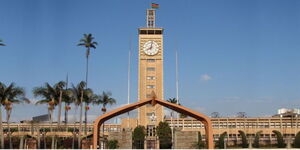Thousands of Nairobi residents risk eviction as the county and national governments ramp up the plan to designate the Nairobi river corridor as a Special Planning Area.
Aside from the evictions, the residents also risk the loss of property worth millions if the plans to go ahead with the project bear fruit.
In early March, the county government of Nairobi issued a special notice making the declaration and invited members of the public to submit their views on the issue within two weeks.
The notice issued by the County Executive Committee Member for Environment, Patrick Mbogo, indicated that the designated area will cover a 60-metre buffer zone beyond the high-water mark on each side of the river—comprising a 30-metre riparian corridor and an additional 30-metre development area.
It will see the Nairobi River Corridor extend from Naivasha Road to Ruai, including its tributaries, and will enable the preparation of a Local Physical Development and Land Use Plan that will provide a framework for river regeneration, flood hazard mitigation, and riparian land-use redevelopment of the land.
The plan will also support the construction of social and affordable housing and associated social and physical infrastructure and will include a financing structure for the development of the special planning area.
Even so, the other side of the coin sees the project leading to evictions and loss of valuable property, especially when done without proper planning.
This is something that has brought about heightened concern amongst residents that will be affected by the supposed development.
Most of the residents expected to be affected are those who live in informal settlements encroaching on riparian land. These include the areas of Korogocho, Mathare, Mukuru, and Kibera.
In terms of compensation, this is a particularly sensitive issue, as there is a substantial legal justification for eviction. Structures on riparian reserves are considered unlawful encroachments under Kenyan law (e.g., Environmental Management and Coordination Act, Water Act, Physical and Land Use Planning Act). This sometimes limits the compensation rights for occupants of such land, especially if it's designated as public land.
However, if evictees are legitimate occupants or meet vulnerability criteria – like families, disabled persons, or long-time dwellers–they may qualify for relocation to social housing (those planned under the Affordable Housing Programme), temporary shelter arrangements, and, in some cases, livelihood support.
Even so, for many informal settlement dwellers, cash compensation is rare unless land ownership or legal tenancy can be proven.












